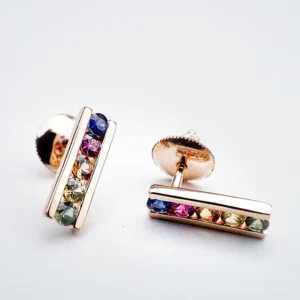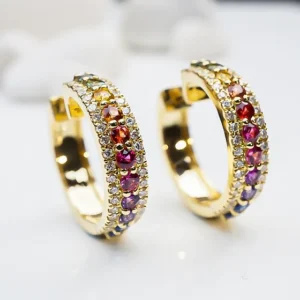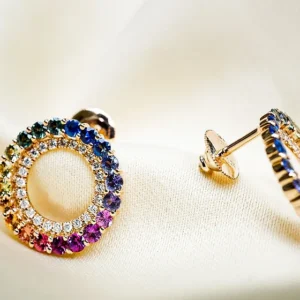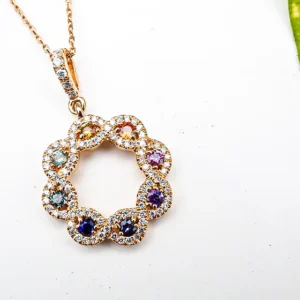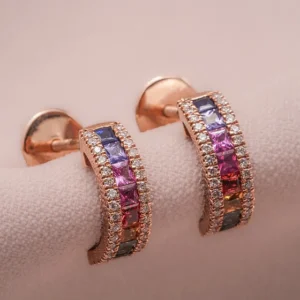Diamond Shapes: Unveiling the Brilliance and Beauty
Diamonds are not only a girl’s best friend but also a timeless symbol of luxury, love, and commitment. One of the most intriguing aspects of diamonds is their diverse range of shapes, each exuding its own unique charm and brilliance.
Table of Contents
In this article, we will delve into the captivating world of diamond shapes, exploring their characteristics, popularity, factors to consider when choosing the perfect shape for your jewelry, and significance in the realm of jewelry.
Introduction
Diamonds have fascinated humanity for centuries with their dazzling brilliance and enduring allure. Beyond their remarkable hardness, diamonds come in an array of captivating shapes that contribute to their exceptional beauty.
Each diamond shape holds a story and charm of its own, making it imperative to understand the intricacies of these diamond shapes when selecting a diamond for that special occasion.
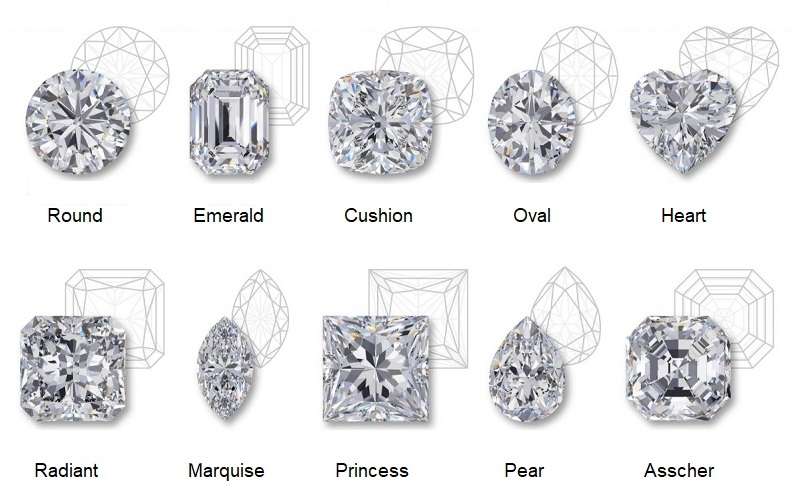
Mesmerizing Magic of Dazzling Diamond Shapes
The Importance of Diamond Shapes in Jewelry
The choice of diamond shape significantly impacts the overall aesthetics and style of a piece of jewelry. Whether it’s a solitaire engagement ring or an intricate necklace, the diamond shape plays a pivotal role in enhancing the overall design and expressing personal style.
Different diamond shapes have their own characteristics that appeal to various preferences, allowing individuals to choose a shape that resonates with their personality and taste.
Brilliant Round Cut Diamonds: Classic Elegance
The round brilliant cut is perhaps the most iconic and classic diamond shape. With its 58 facets, this cut maximizes the diamond’s brilliance, offering unmatched sparkle and fire. Its timeless appeal makes it a popular choice for engagement rings, embodying everlasting love and tradition.
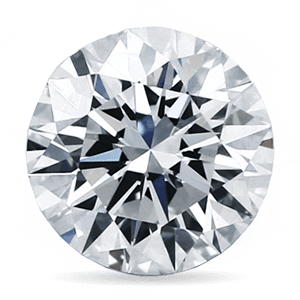
Round Cut Diamond
Round Cut Engagement Rings
Round cut engagement rings epitomize timeless elegance, boasting a classic round shape meticulously designed to maximize a diamond’s brilliance. With perfectly aligned facets, these rings create a stunning interplay of light that enchants the eye from every angle.
Whether embraced by a minimalist setting or adorned with intricate detailing, round cut engagement rings embody sophistication and enduring style. The symmetry and balance of the round cut make it an ideal canvas to convey the promise of everlasting love, encapsulating the beauty of tradition in a modern world.
Princess Cut Diamonds: A Modern Fairytale
The princess cut diamond, known for its square shape and sharp corners, is a modern favorite. Combining the elegance of a traditional shape with contemporary aesthetics, the princess cut offers a brilliant display of facets that captivate the eye. Its versatility makes it a striking choice for both engagement rings and other jewelry pieces.

Princess Cut Diamond
Princess Cut Engagement Rings
Princess cut engagement rings beautifully blend modernity and romance, featuring a distinctive square shape with sharp corners and elegant facets that capture and reflect light. Whether set in a sleek band or intricately designed, these rings symbolize the promise of a shared future, making them both a striking accessory and a cherished emblem of commitment.
Emerald Cut Diamonds: Timeless Sophistication
The emerald cut diamond features a rectangular shape with beveled corners, emphasizing clarity and elegance. This step-cut design creates a hall of mirrors effect, giving the diamond a unique allure. Often chosen by those with a penchant for sophistication, the emerald cut exudes a timeless beauty that stands out among other diamond shapes.
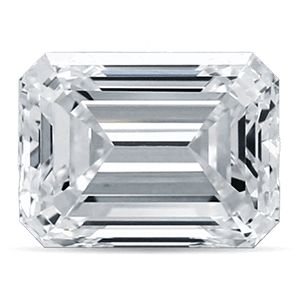
Emerald Cut Diamond
Emerald Cut Engagement Rings
Emerald cut engagement rings exude timeless sophistication, showcasing a rectangular shape with beveled corners that create a mesmerizing hall of mirrors effect. Whether in a sleek solitaire or intricate setting, they embody understated charm and a commitment to clarity, reflecting the journey two souls embark upon together.
Cushion Cut Diamonds: Romantic Allure
The cushion cut diamond, often referred to as a pillow cut, combines a square or rectangular shape with rounded corners, resembling a cozy cushion. This shape showcases larger facets that amplify the diamond’s brilliance while retaining a romantic and vintage appeal. Its romantic charm makes it a popular choice for engagement rings that evoke a sense of nostalgia.

Cushion Cut Diamond
Cushion Cut Engagement Rings
Cushion cut engagement rings combine vintage charm with modern allure, boasting a square or rectangular shape and rounded corners reminiscent of a cozy cushion. This design enhances brilliance while exuding timeless elegance, making them a cherished symbol of enduring love and commitment.
Radiant Cut Diamonds: Sparkling Fire
The radiant cut diamond is a blend of the classic round brilliant and the elegant emerald cut. Known for its trimmed corners and numerous facets, the radiant cut offers a balance between brilliance and shape. It emits a stunning play of light, making it a dazzling option for those seeking a radiant and vibrant diamond.
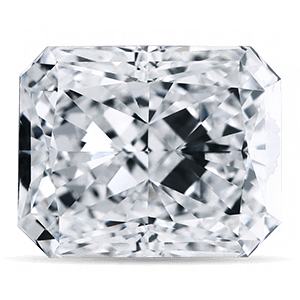
Radiant Cut Diamond
Radiant Cut Engagement Rings
Radiant cut engagement rings captivate with their trimmed corners and numerous facets that ignite a dazzling play of light. The balance between brilliance and shape in this design creates a sparkling fire that draws the eye. Whether set in a classic or contemporary setting, radiant cut engagement rings shine as a testament to the unique love story they represent.
Asscher Cut Diamonds: Art Deco Glamour
The asscher cut diamond, with its square shape and deeply cut step facets, harks back to the Art Deco era. This shape showcases a mesmerizing hall of mirrors effect, radiating elegance and sophistication. The asscher cut’s unique appearance appeals to those who appreciate vintage charm and a touch of old-world glamour.
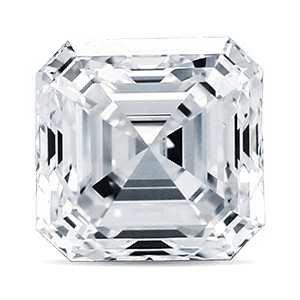
Asscher Cut Diamond
Asscher Cut Engagement Rings
Asscher cut engagement rings exude Art Deco glamour with their square shape and deeply cut step facets. This design showcases a mesmerizing hall of mirrors effect, radiating elegance and sophistication. Asscher cut engagement rings offer a touch of vintage charm and old-world allure, making them a unique choice that reflects individual style and a love story that transcends time.
Oval Cut Diamonds: Graceful and Chic
The oval cut diamond combines the brilliance of the round cut with the elongated shape of the marquise cut. This symmetrical shape elongates the finger, creating an illusion of length. It’s a popular choice for those who desire the sparkle of a round cut with a unique twist that exudes grace and modern elegance.
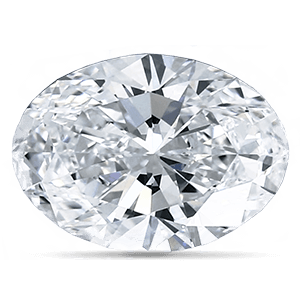
Oval Cut Diamond
Oval Cut Engagement Rings
Oval cut engagement rings exude modern elegance with their elongated shape and brilliant facets. This design elongates the finger while creating a stunning play of light. Whether in a minimalist or elaborate setting, oval cut engagement rings symbolize grace and individuality, making them a sought-after choice for those who desire a blend of classic and contemporary beauty.
Pear Shaped Cut Diamonds: Elegance in Every Angle
The pear-shaped cut diamond, also known as the teardrop cut, is characterized by its rounded end and pointed tip. This shape seamlessly combines the brilliance of the round cut with the elegance of the marquise cut, resulting in a diamond that sparkles with every movement. It’s a symbol of individuality and poise.
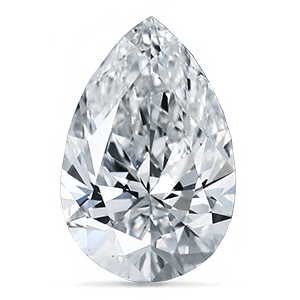
Pear Cut Diamond
Pear Cut Engagement Rings
Pear cut engagement rings offer a unique blend of elegance and individuality, featuring a rounded end and a pointed tip that creates a distinctive teardrop shape. This design showcases brilliant facets that radiate light and sparkle with every movement.
Whether set in a delicate band or adorned with intricate detailing, pear cut engagement rings symbolize a love story that is as unique as the wearer. With its graceful silhouette, this shape captures both the romance of a pear and the promise of a shared journey.
Marquise Cut Diamonds: Distinctive and Elegant
The marquise-cut diamond, recognized for its elongated shape and pointed tips, presents a unique and sophisticated look. Often referred to as the “boat-shaped” cut, this unique shape elongates the wearer’s finger while maximizing the diamond’s surface area for a captivating display of brilliance.
The marquise cut’s graceful curves and tapered points create a sense of drama and sophistication, making it a favored choice for those who seek a blend of classic and contemporary design in their jewelry.
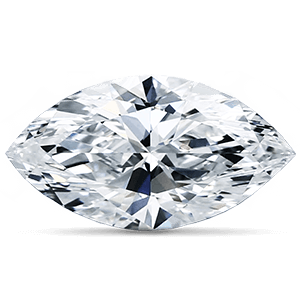
Marquise Cut Diamond
Marquise Cut Engagement Rings
Marquise cut engagement rings showcase elegance with their boat-shaped design that elongates the finger and maximizes brilliance. Whether in a minimalist or ornate setting, they symbolize a journey of endless possibilities, blending classic and contemporary allure for a distinctive choice that captivates the heart.
Heart Cut Diamonds: Romantic Symbolism
The heart cut diamond, with its romantic symbolism, is a captivating choice that embodies love and devotion. This unique shape features a cleft at the top and brilliant facets that radiate light and sparkle.
Adorning jewelry with a heart cut diamond goes beyond aesthetics—it carries a sentimental message of affection and commitment. Whether gracing an engagement ring or a pendant, the heart cut diamond evokes emotions and stands as a testament to the wearer’s profound connections and cherished moments.
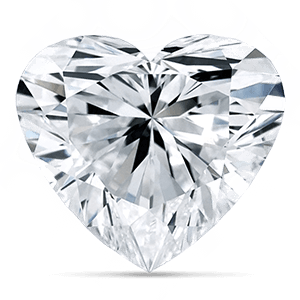
Heart Cut Diamond
Heart Cut Engagement Rings
Heart cut engagement rings embody romance with their distinctive cleft at the top and brilliant facets that radiate light. This design goes beyond aesthetics, carrying a sentimental message of affection and commitment. Whether in a solitaire setting or adorned with delicate details, heart cut engagement rings represent cherished moments and profound connections, making them a beloved choice for those seeking a symbol of love that touches the heart.
Factors Influencing Diamond Shape Choice
Selecting the right diamond shape involves a balance between personal preference and practical considerations. Factors such as hand shape, style, and setting compatibility play a role in the decision-making process. By understanding the nuances of diamond shapes, you can make an informed choice that reflects your individuality and taste.
Personal Style and Preference
Your personal style and aesthetic preferences play a significant role in choosing a diamond shape that resonates with you. Whether you lean toward classic elegance or contemporary flair, there’s a diamond shape that matches your taste.
Hand Shape and Finger Length
Factor in the shape of your hand and the length of your fingers. Certain diamond shapes, such as oval and marquise, can create the illusion of elongated fingers, while round and princess cuts complement various hand shapes.
Diamond Cut and Brilliance
Each diamond shape interacts with light differently due to variations in cut and facet arrangement. For maximum brilliance, opt for shapes like the round brilliant and princess cut, while step-cut shapes like the emerald cut emphasize clarity.
Setting and Design
The chosen diamond shape should complement the overall design of the jewelry piece. A solitaire setting may favor a classic round or princess cut, while intricate settings could accommodate unique shapes like the pear or cushion cut.
Choosing the Perfect Diamond Shape for Different Jewelry
Engagement Rings
Engagement rings are a symbol of everlasting love, and the diamond shape you choose can convey a specific message. Classic round or princess cuts are timeless and versatile, while unique shapes like the heart or cushion cut add a touch of individuality.
Earrings and Pendants
Bracelets and Necklaces
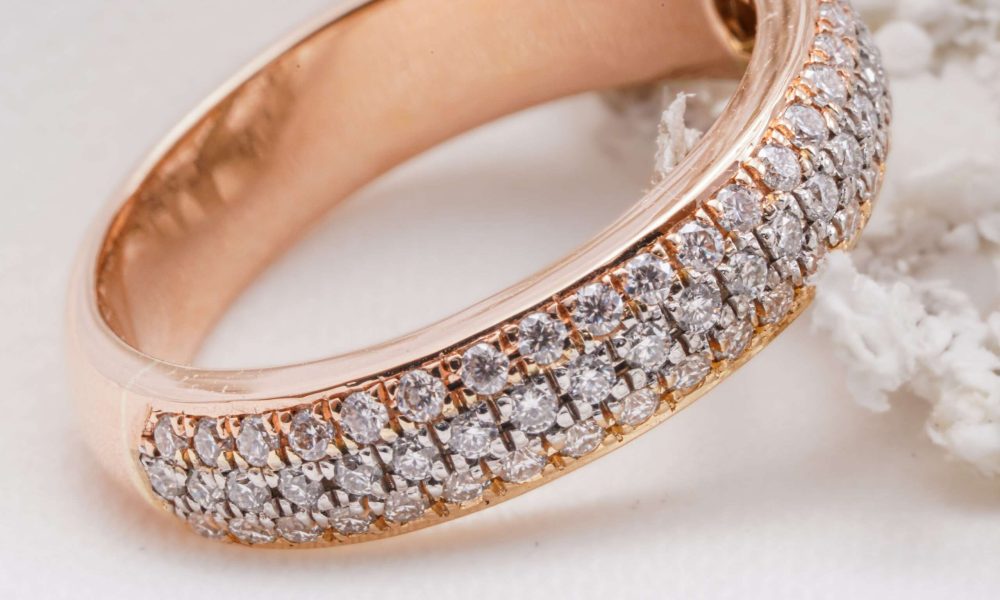
Dazzling Diamond Ring
Diamond Shape Trends
Vintage and Antique Cuts
Vintage-inspired jewelry has gained immense popularity, bringing back antique diamond cuts like the asscher and cushion cuts. These cuts evoke the glamour of bygone eras and offer a distinctive alternative to modern shapes.
Modern and Unique Shapes
As individuality becomes more celebrated, modern and unique diamond shapes are on the rise. From the sleek elegance of the pear cut to the intriguing geometry of the radiant cut, these diamond shapes cater to those looking for something different.
Caring for Different Diamond Shapes
Cleaning and Maintenance
Regardless of the diamond shape, routine cleaning is essential to maintain its brilliance. Use a mild solution of warm water and gentle soap, along with a soft brush, to remove dirt and oil from the facets.
Avoiding Chips and Scratches
Certain diamond shapes with pointed corners, like the marquise and pear, are more susceptible to chipping. To prevent damage, avoid wearing these shapes during activities that could expose them to impact.
The Influence of Celebrity Engagement Rings
Celebrity engagement rings often set trends and influence popular choices in diamond shapes. From Meghan Markle’s elegant three-stone cushion cut to Beyonce’s dazzling emerald-cut diamond, these iconic rings shape the aspirations of countless individuals seeking a touch of celebrity glamour.
Unveiling the Beauty of Different Diamond Cuts
In the realm of exquisite jewelry, diamond cuts play a pivotal role in crafting pieces that resonate with individual preferences and style. From the classic allure of emerald cut engagement rings to the contemporary elegance of oval engagement rings, each diamond shape offers a unique story to tell.
The brilliance of a princess cut diamond ring captures modern romance, while exploring the intricate world of diamond cuts unveils a rich tapestry of designs that span pear-shaped engagement rings, emerald cut diamond rings, oval diamond rings, and cushion cut engagement rings.
Princess cut engagement rings exude a blend of sophistication and contemporary aesthetics, while radiant cut engagement rings ignite a fire of brilliance that captivates the eye.
The distinct silhouette of pear engagement rings radiates elegance from every angle, echoing the wearer’s individuality. These shapes of diamonds showcase the creativity and craftsmanship that bring dreams to life, transforming precious stones into cherished symbols of love and commitment.
The exploration of different diamond cuts allows us to appreciate the artistry behind each facet, as well as the emotional resonance they hold.
From the timeless emerald cut to the intricate detailing of diamond cuts, the world of diamonds is a realm where beauty, craftsmanship, and sentiment coalesce to create lasting treasures.
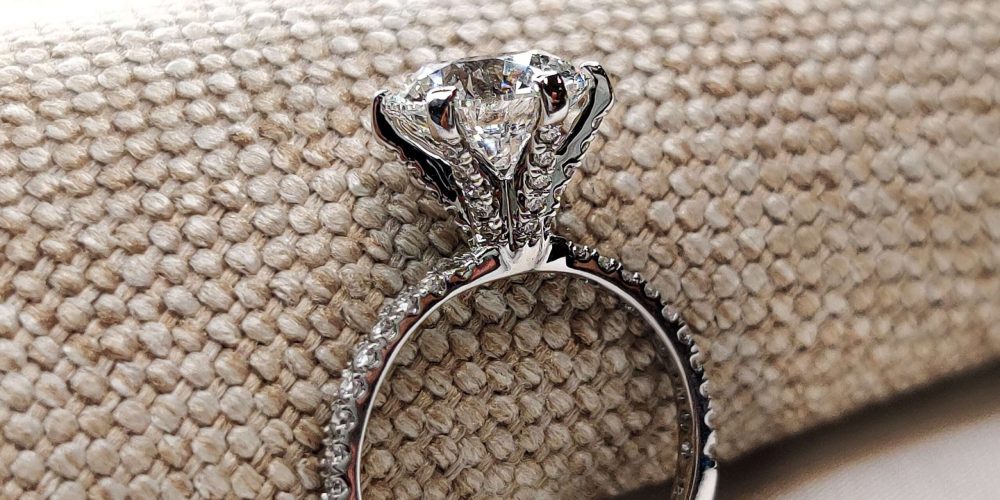
Round Cut Diamond Ring
Final Thoughts
In the realm of fine jewelry, diamond shapes are a fundamental aspect that defines both style and sentiment. These exquisite gemstones, shaped through precision and artistry, go beyond mere adornment. They become vessels for emotions and expressions of love and individuality.
Each diamond shape possesses its own personality, and the choice of shape can convey a profound message. The classic elegance of a round brilliant might symbolize timeless love, while a unique and intricate shape like the marquise cut can reflect the uniqueness of a relationship.
When you embark on your journey to find the perfect diamond, it’s not just about the sparkle—it’s about finding the shape that resonates with your heart, captures your essence, and encapsulates the sentiments you wish to convey, ensuring that your jewelry piece becomes a cherished symbol of your personal story.
FAQs About Diamond Shape
Absolutely! Less common shapes like the marquise or heart cut can create stunning and unique engagement rings.
Yes, certain shapes can complement hand shapes. For example, elongated shapes like the oval or marquise can flatter shorter fingers.
No, different shapes have varying facet arrangements. For example, the round brilliant has 58 facets, while the emerald cut has step-cut facets.
Yes, mixing diamond shapes in earrings or pendants can create a captivating and personalized look.
Many reputable jewelers offer a range of modern and unique diamond shapes to choose from.
The round brilliant diamond shape is renowned for its exceptional sparkle due to its precise facet arrangement and symmetry.
Yes, elongated shapes like the oval or pear cut can appear larger than round diamonds of the same carat weight due to their surface area.
Some jewelers offer custom cutting services that allow you to create a unique diamond shape tailored to your design preferences.
Yes, some diamond shapes have deep historical and cultural ties. For example, the cushion cut harks back to the romantic styles of the 19th century.
Consider your personal style, preferences, and the emotions you associate with different shapes. This will help you select a diamond shape that resonates with you on a personal level.

